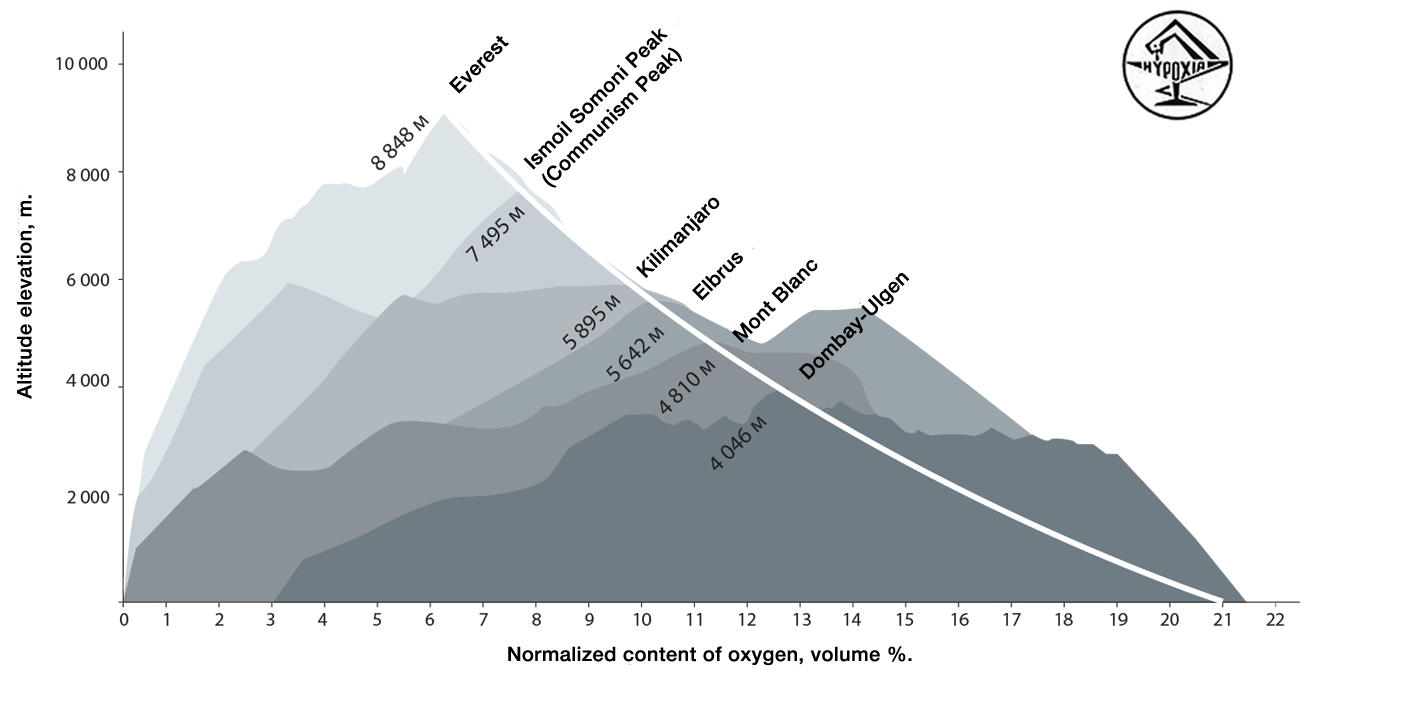Interval (Intermittent) Hypoxic
Training Method
Interval (or Intermittent) Normobaric Hypoxia (repeated, simulated “climbing up and leaping from mountain” at constant, normobaric air pressure) had been initially proposed in 1970 by prof. R.B. Strelkov, et al. and had been described in detail in 1994 in "Recommended practices and clinical guide for physicians" from the Ministry of Health of the Russian Federation. Follow-up studies of the Intermittent Hypoxic Training (IHT) method for treatment of wide range of chronic diseases resulted in development of numerous manuals and guidebooks for physicians, sports - trainers and wellness-practitioners.
Recently, significant advance in the IHT efficiency has been achieved by introduction of oxygen-enriched air inhalation after each period of hypoxic inhalation. It provides more rapid and pronounced development of beneficial adaptations.. This method had been dubbed "The intermittent hypoxia-hyperoxia treatment/training (IHHT)”.
Relationship between the Oxygen Content and Altitude





